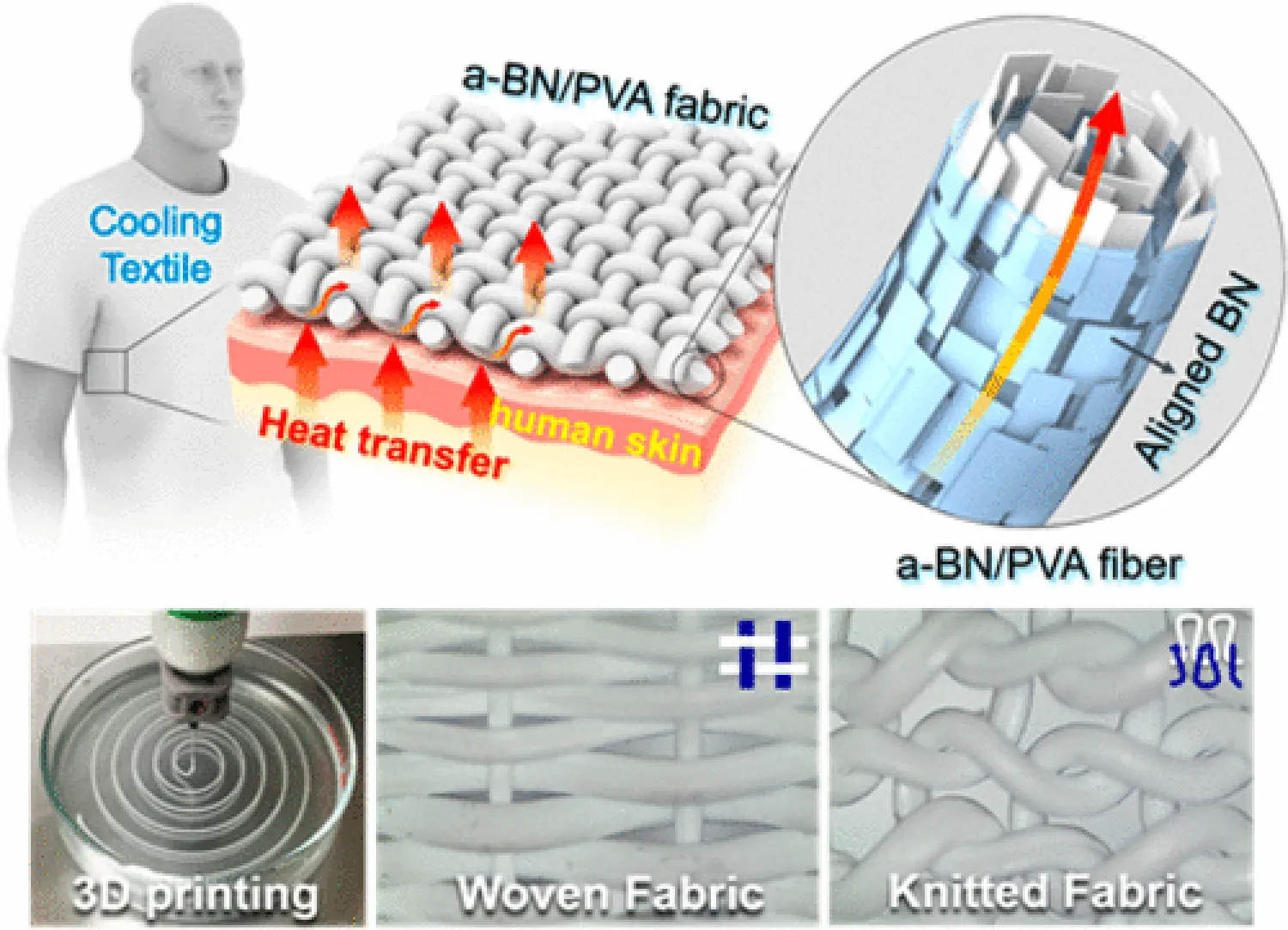A team of researchers at the University of Maryland in the US has now developed a thermally conductive and strong textile from fibers of aligned boron nitride nanosheets embedded in a polymer matrix that can cool a person down by up to 2°. The textile is easy to make using a simple, fast and scalable 3D printing method and has a thermal conductivity that is 55% higher than commercial cotton.
Researchers recently fabricated a mid-infrared transparent nanoporous polyethylene fiber for making clothing and face masks that lowers body temperature by radiative cooling. They have also developed glass-polymer hybrid metamaterials that work on the same principle.
Building on such work, a team led by Liangbing Hu of the Department of Materials Science and Engineering at the University of Maryland has now designed a thermally conductive textile that directly conducts heat away from the body. The material is based on boron nitride nanosheets (BNNSs) and poly(vinvyl alcohol) (PVA) composite fibres. BNNSs have a high in-plane thermal conductivity of up to 2000 W/(mK) and Hu and colleagues made sure they were able to exploit this property by aligning the BNN sheets in a highly ordered way. They did this by first printing the BN/PVA fibres and then hot-drawing them into aligned structures. The fibers were then weaved or knitted into a textile.
“The hot drawing process creates energetic pathways along which phonons (vibrations of the crystal lattice) can travel,” explains Hu, “and highly oriented BNNSs can effectively enhance the thermal performance of the BN/PVA composite fibre by providing numerous thermally conductive pathways along the aligned and interconnected BNNSs. Indeed, we measured the thermal conductivity of the finished material to be as high as 0.078 W/(mK).”
It also has a high tensile strength of around 355 MPa, he adds.
The material might be used in summer clothing for wearing indoors, nanotechweb.org reported Hu as saying, and we estimate that it can cool a person down by up to 2°.
The researchers, reporting their work in ACS Nano DOI: 10.1021/acsnano.7b06295, say that they will now be further improving the cooling capacity of their thermal regulation textile. “We will also be looking into manufacturing it on a large scale, and then commercializing it,” says Hu.









